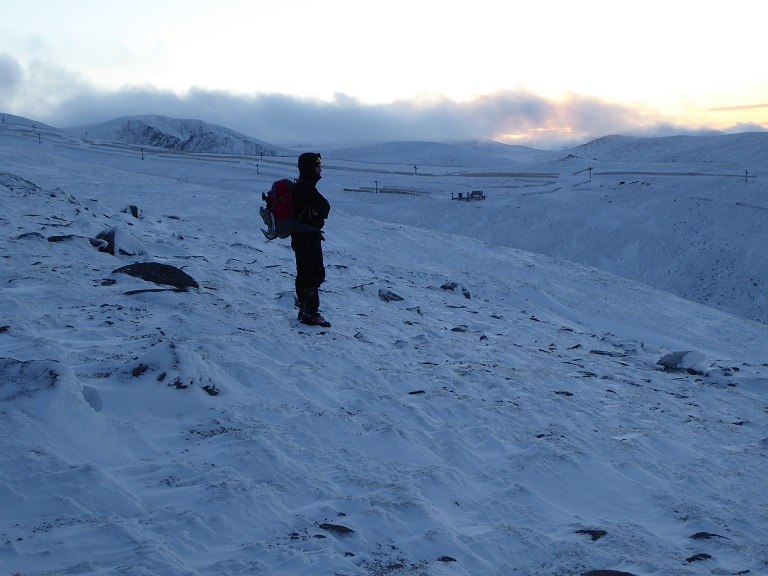
Highland and Islands Enterprise’s announcement last week (see here) that the funicular would remain out of action for the summer and possibly longer, failed to explain what has caused the problems or the likely cost of the repairs that might be needed to make it safe to use again. Meantime it has announced that the company it has set up to run Cairngorm, Cairngorm Mountain (Scotland) Ltd will develop alternative plans for the summer but without mentioning any engagement with the local community or stakeholders. Lack of transparency and a failure to consult are two hallmarks of HIE’s mismanagement of Cairngorm. This post takes a look at the issues and the public debate which needs to happen.
What is causing the problems with the funicular and the implications?
After it suspended the operation of the funicular, almost five months ago now, HIE announced that it had commissioned a detailed engineering report for early December. That was then delayed to just before Xmas, allegedly because of the weather. HIE then took a further month until they made their announcement on 29th January. Instead of making the engineer’s report public, however, HIE has nowcommissioned “an independent peer review of COWI’s report, in line with industry best practice for complex investigations of this nature.” The effect of this is that stakeholders and the public will be kept in the dark about what has gone wrong that bit longer.
HIE clearly knows more than it is letting on but, rather than explain what has gone wrong and why, it has preferred to provide a list of the major works required to fix the funicular:
Work is required to strengthen the piers, beams and foundations, and install new bearings with higher load and movement capacity.
I don’t believe any of this is accidental.
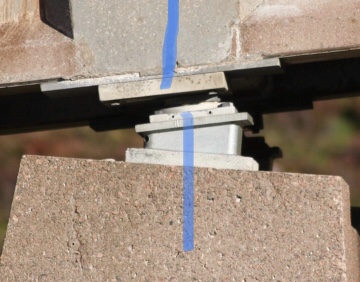
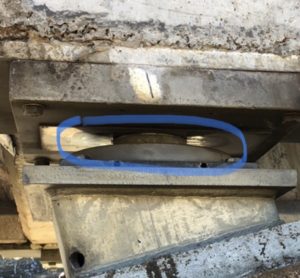
The concrete beams on which the funicular track is laid are supported by (replaceable) metal plates sandwiched between them and the pillars. These bearings are designed to allow a certain amount of movement from weight transfer as the train moves over them, expansion/contraction from changes in temperature, seismic movements etc. On one side of the funicular these bearings sit in grooves, allowing only up and down movement, but on the other side are free, allowing sideways expansion and contraction.
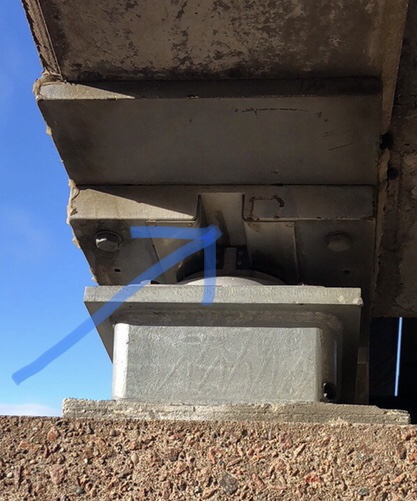
The basic problem, as shown in the top right photo above, is that many of the bearings are now no longer aligned properly (the plates should re-align in average temperatures when the train is not in use). This suggests that the pillars must have moved and explains the exploratory investigations that have taken place around the pillar bases.
I have been informed, by people far more knowledgeable than me, that between 20 and 30 of the pillars appear to have permanently misaligned bearings. I had hoped the detailed structural engineers report might provide confirmation of this but, since HIE appear to want to keep this secret, believe its in the public interest that people are made aware of the likely extent of the problems. While the numbers may not be exactly right, HIE’s admission that any works may take more than the summer to fix, suggest both that the fundamental problem is that pillars have moved and that the number involved is extensive.
The interesting question is why this should have happened? Does it stem from an original fault in the design or has the problem been created more recently? One possible explanation, which I have mentioned before on parkswatch, is that funicular railways normally operate underground in tunnels where there is limited temperature variation between winter and summer. Could the extremely hot weather in May, with temperatures of over 25C recorded on Speyside, and the sun beating down on one side of the funicular have exceeded the design specification? Could expansion of the track have shifted the pillars? This explanation however does not appear to explain which pillars have been affected. Alongside the new Shieling Rope tow there is a continuous row of 12-13 pillars where the bearings appear misaligned but above the mid-station the affected pillars appear more random. Does the explanation lie in ground movement and could it be therefore that the works that took place to install the Shieling Rope have somehow contributed to the problem? For example, could the alterations in drainage caused by the Sheiling works, accentuated by the hot weather, have caused the neighbouring funicular pillars here to move?
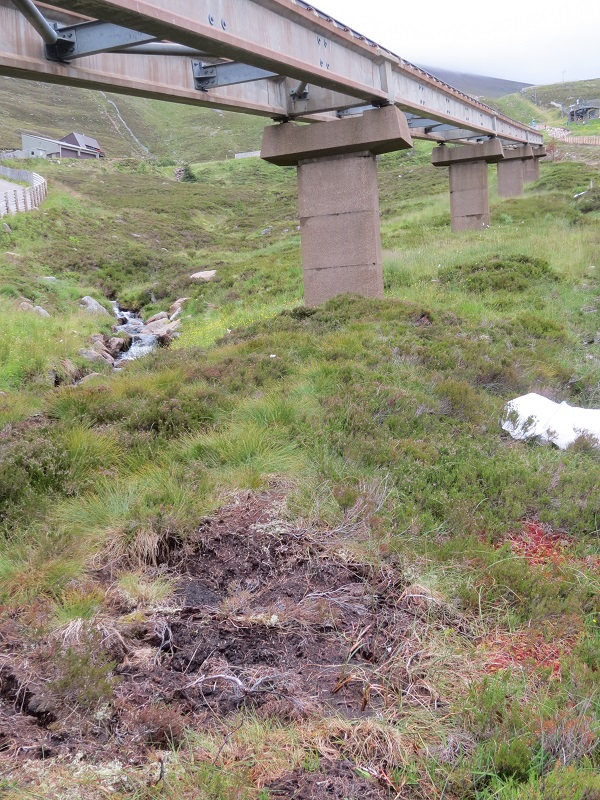
If so, HIE’s failure to ensure the Shieling planning conditions were adhered to and that work was confined to the designated area (see here) would have really come home to roost.
Both these suggestions are simply hypotheses but do I hope show why its so important that HIE releases the report into the public realm and it explains what has caused the problems. Without a satisfactory explanation of the causes of the problems, no lessons can be learned (or legal action taken if appropriate), there will be no guarantee that the problems won’t recur and it will be impossible to provide realistic estimates of the cost of repairs..
HIE’s assumptions about the future of the funicular
Without providing any indication of the likely costs and without any consultation with the local community and stakeholders, HIE’s announcement last week basically said that the funicular will be repaired. That is wrong.
The problem is that for twenty-five years HIE has been obsessed with the idea of the funicular, to the degree that it cannot envisage any alternatives and is deaf to all criticism. The latest issue of the Cairngorms Campaigner, the excellent newsletter of the Cairngorm Campaign (I am a member), contains a facsimile of a letter sent to the Secretary of State for Scotland in June 1996 objecting to the funicular. The lead signatory was David Attenborough and it was signed by a number of other famous people such as Colin Baxter, Chris Bonnington, David Bellamy and Chris Packham alongside a host of experts. The last three reasons it gave for questioning the funicular are as relevant as ever:
- the commercial viability of the project has been widely and authoritatively questioned
- the financial support sought by this project represents poor value for money to the taxpayer; and
- alternative, environmentally sustainable and more economically viable development options are available and should be considered.
Deja vu! Yet, despite having now had to rescue Cairngorm Mountain from bankruptcy twice in the intervening years, on both occasions in large part due to the financial dead weight of the funicular, HIE ploughs on as if nothing has changed.
HIE is only able to do this because it has never been held to account. Even Audit Scotland’s report into the funicular fiasco simply washed over it.
I was in Aviemore a couple of weeks ago and, despite the lack of snow and the lack of the funicular, the place was heaving. Its like that much of the year now with tourist numbers steadily increasing. The fact is that the funicular is not very important to the local economy. What is important for attracting visitors is the natural environment, the qualities that led to the Cairngorms being designated a National Park.
Yet HIE is still stuck on a model of providing a permanent year built visitor “attraction” at Cairngorm. Hence why, as I discovered recently, almost the first thing it did on setting up Cairngorm Mountain Scotland Ltd was to inform the Cairngorms National Park Authority that it wished to go ahead still with the Ptarmigan Planning Application. That was BEFORE it had any idea of what the costs of repairing the funicular might be. That is not rational behaviour.
This is not to suggest that downhill skiing does not still make an important contribution to the Speyside economy in the winter months. It does and it provides a unique outdoor recreational experience in Scotland. With global warming, however, and less snowy winters, any future plan for Cairngorm needs to look ahead and consider what happens if, as appears likely, there is even less snow than now. I am confident, based on the numbers of people now visiting in winter, that the local economy will adapt. Meantime, downhill skiing on the model that has been developed by Scotland’s other ski resorts could be sustainable, but it needs to be planned for on the basis that there is unlikely to be extensive skiing every winte, that the ski lifts should be used for other purposes (e.g mountain biking) and should be designed and located in a way that is compatible with the area being a National Park.
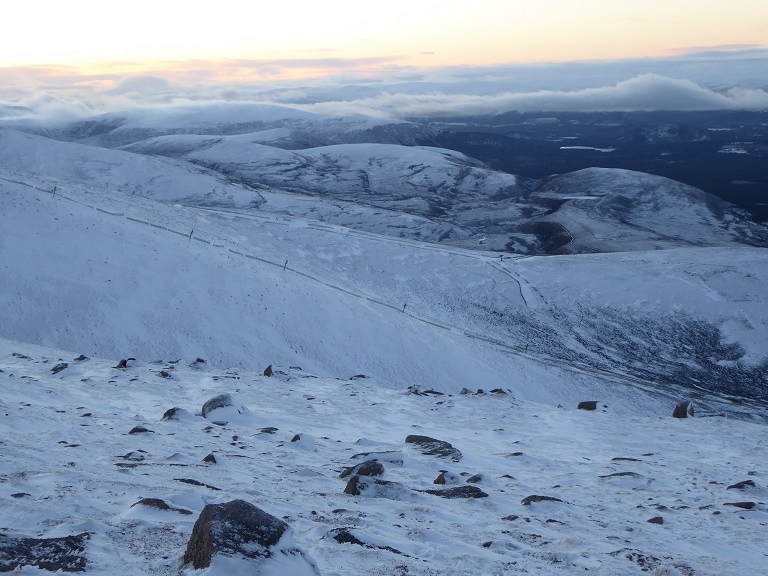
What is now needed, is a cost/benefit analysis of putting in new ski lifts which takes account of the importance of downhill skiing for active outdoor recreation and the opportunities for mountain bike trails along with a discussion of how the conservation value of the ski area can be enhanced.
That needs to considered alongside a cost/benefit analysis of repairing the funicular, including whether the cost of repairs and proposed improvements to the associated infrastructure are ever likely to pay for themselves. This should not be difficult to do. HIE has all the figures for visitor numbers and with two structural engineering reports should be able to provide accurate costs for repairing the funicular. All this information needs to be put on the table for the local community and other stakeholders as a basis for some open and honest discussion.
Unfortunately, that appears unlikely to happen without political intervention. What HIE appears set on doing is thrusting its own solution on the public ,on a take it or leave it basis, without any real consultation. This is what it did with its ill-thought out new vision for Cairngorm announced last October (see here). That vision is now in tatters, with the chances of the public purse being able to fund both the repair the funicular and fantasy projects like the zipwire being minimal.
What needs to happen
Now that HIE has rescued Cairngorm Mountain from the clutches of Natural Retreats, there is no need for it to remain in charge of what happens at Cairngorm. Indeed, all the evidence shows it would best be kept out of the decision making progress. Its role should be limited to financing any new development that is agreed and to financing the restoration of all the damage that has taken place under its aegis, including the cost of removing the funicular if that proves to be no longer financially viable.
The local community, in consultation with recreational and conservation organisations, should now play the key role in determining what happens at Cairngorm. To do so they need support and that needs to come from other public authorities. While it makes sense to transfer the Cairngorm Estate to Forest Enterprise in the first instance, so all the land from Loch Morlich to the summit of Cairn Gorm is owned by one body, the Cairngorms National Park Authority has an important role to play in ensuring that any future developments are worthy of a National Park. Forest Enterprise is responsible to the same Scottish Cabinet Secretary as HIE, Fergus Ewing, and so very unlikely to speak out. Perhaps therefore its time for the CNPA, which appears to be constantly pressurised by Mr Ewing but is not directly accountable to him, to start taking a lead?
What is most annoying about the situation at CairnGorm is that it has some of the best snow holding in the country – the Ciste Gully for example. This year we could have been skiing from December – lift served skiing – as the Ciste Gully was complete to close to the start of the old board walk. We weren’t because HIE ripped out the lifts* that could have been renovated to access that area even when they already new of problems with the funicular. The Ciste chairs are required because there is regularly skiable snow in the Ciste Gulley that cannot be accessed by surface tows. The old chairs and the board walk were built where they were for a reason, the snow holding properties of the terrain, which were clearly much better understood by the original developers of Cairngorm than the present incumbents at HIE.
* I’ve always thought HIE ripped out the Ciste chairs to make the Community Buy Outs plans much more difficult to accomplish as they had planned to refurbish the old chairs. Much more difficult if there is the expense of new lifts plus the palaver of having to get full planning permission.
We have now reached the stage for the funicular railway to be mothballed. There is no point in spending any more public money on it until AFTER new uplift facilities have been put in place for skiing, mountain biking, walking and climbing. The priority for Cairn Gorm must be the development of ACTIVE recreation facilities not PASSIVE entertainment. We cannot afford any more time and money wasted on the funicular disaster while new chairlifts are needed NOW. Let’s mothball the funicular for 2 or more years and in the meantime get on with building the facilities that the public really need. Let’s keep the Ptarmigan restaurant as it is but put in a new mid station facility, close by the site of the old shieling, which is where the majority of winter users need rest, food and toilet provision.
HIE need to be removed from the mountain immediately. Their role in future should be restricted to responsibility for the funicular, involving mothballing, repair or removal and, for all other facilities simply the provision of grant aid. They should have NO ROLE in strategic decisions on future development on the mountain. All of their land should be transferred into the ownership of the Forestry Commission or the Cairngorms National Park Authority to form a single land entity from the bottom to the top of the mountain. If the CNPA take ownership that should also include the FC land from Loch Morlich upwards. That is the only way that sufficient profit can be generated, from activities on the low ground, to subsidise activities on the high ground. The Aviemore and Glemore Community Trust should be partners with the FC or CNPA in the management of the mountain, in association with wider interests.
Your point about ground movement is well made because that is what happened during the Easter holiday in, I think 1969. A movement somewhere between bottom and mid station cut the buried electricity cable resulting in no uplift above the White Lady Sheiling. I was there at the time and spent the three or four days it took to fix walking up under the stilled chairlift. Possible explanation here http://cairngormslearningzone.co.uk/landscape-geology/cairngorms-national-park-today/geomorphological-processes/periglacial-processes.
Now there’s no White Lady just a white elephant!
Yes, serious questions need to be asked about how the concrete pillars were secured to the bedrock and if this now thought sufficient. If not, that in effect means the whole funicular might need to be rebuilt from scratch – the cost???
Given HIE’s fixed budget the people and companies I feel sorry for are those throughout the Highlands and Islands who have projects that are now not going to go ahead because of the £20million(?) that is now going to go into the already prosperous (“heaving”) Aviemore area. But it was ever thus.